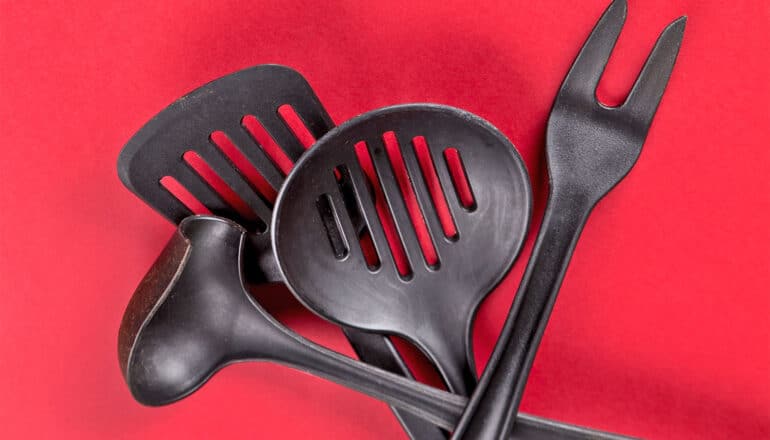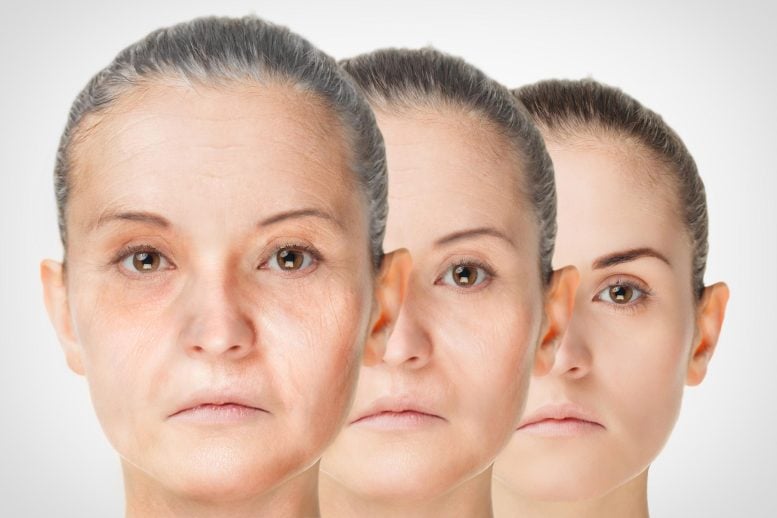
Plastic containers and utensils are staples in many kitchens—but could they be affecting your health?
Plastics, often seen as a single material, are actually made from many different polymers, each with a unique chemical makeup. They contain different chemical additives like dyes, plasticizers, and flame retardants. As these plastics interact with microbes and environmental chemicals, the risk to human health becomes more complex.
One of the most common ways people are exposed to plastics is in the kitchen:
Black plastic spatulas and other utensils may contain harmful chemicals picked up when recycled from electronic waste. Plastic cutting boards shed tiny fragments of varying shapes and sizes that can be ingested. Plastic containers can leach chemicals when heated in the microwave. Plastic food containersBlack plastic & your health
Black plastic is commonly used in kitchen utensils, takeout containers, food trays, and children’s toys. But many of these products are made from recycled electronic waste, which can contain harmful chemicals like brominated flame retardants and heavy metals. These chemicals have been linked to a variety of health concerns, including:
cancer endocrine disruption neurotoxicity infertilityA recent study found flame retardants in 85% of 203 tested consumer products, including banned chemicals, suggesting they were made from old electronic waste.
Are plastics a risk for kids?
Children are more vulnerable to environmental chemicals because their bodies and brains are still developing.
“Flame retardants have been detected in breast milk samples across the US. Children can also be exposed through contaminated food and house dust,” says Jane van Dis, assistant professor of obstetrics and gynecology at University of Rochester Medical Center.
Some plastic toys contain flame retardants that may leach out when children chew on them, exposing children to chemicals that can affect brain and reproductive system development.
Plastic cutting boards
A recent study tried to mimic everyday exposure by feeding mice microplastics made by chopping on real plastic cutting boards. The results showed that different plastics caused different health effects: one type led to gut inflammation, while another changed the gut bacteria. This suggests that real-life plastic exposure is more complicated than lab studies conducted on single types of standard particles might suggest.
In an invited commentary on the study, the co-directors of the Lake Ontario MicroPlastics Center (LOMP), Katrina Korfmacher, professor of environmental medicine at the University of Rochester Medical Center, and Christy Tyler, professor at RIT, reflected on how much plastic we might be adding to our food just by preparing meals at home using plastic tools and containers.
They emphasize that while microplastic exposure is a growing concern, we still don’t fully understand how it affects human health. For instance, although lab studies link microplastics to gut inflammation, only a small percentage of people have such symptoms.
How can you limit exposure?
“The ways that flame retardants and other harmful chemicals end up in plastics we use on a daily basis are complex, as are the solutions,” says Korfmacher.
Still, there are simple ways to reduce exposure:
Choose wood or stainless steel utensils over black plastic. Avoid microwaving food in plastic containers. Wash hands and wipe down surfaces after handling plastic packaging. Don’t let young children chew on plastic toys.“These substances are known endocrine disruptors, meaning they can interfere with hormonal systems and potentially lead to various health issues,” says van Dis.
In the long run, they argue that better testing, safer alternatives, and preventing electronic waste from entering the production of consumer products—especially those that come in contact with food—need to occur to reduce sources of exposure.
Source: University of Rochester
The post Is the plastic in your kitchen dangerous for your health? appeared first on Futurity.


 2 months ago
25
2 months ago
25 




.jpg.webp?itok=1zl_MpKg)





 Bengali (Bangladesh) ·
Bengali (Bangladesh) ·  English (United States) ·
English (United States) ·